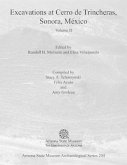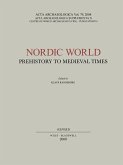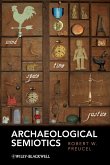Mixtecs, Zapotecs, and Chatinos: Ancient Peoples of Southern Mexico examines the history of the rich and complex societies that arose and flourished in the southern Mexican state of Oaxaca. Shortly after its founding as a hilltop epicenter of Zapotec culture in about 500 bc, Monte Albán became what is widely considered to be the first city in the Highlands of Mexico. Yet between 300 bc and ad 800, many other powerful urban polities developed in the disparate geographic regions surrounding the Valley of Oaxaca, including in the highland valleys of the Mixteca and lower Río Verde Valley along the Pacific Coast. By drawing upon the most recent archaeological, ethnographic, epigraphic, linguistic, and iconographic evidence, Mixtecs, Zapotecs, and Chatinos reveals the lengthy, complex strands of historical and cultural interactions woven among the diverse pre-Hispanic societies of Oaxaca. Along with comparing patterns in the settlement, art, architecture, and writing that developed in these regions, Joyce also uses contemporary social theory to challenge previous approaches and address many key problems in the archaeology of the Americas such as the rise and fall of civilizations and the role of religion and ideology in political control. Informed by thoughtful analysis of recent evidence, anthropological breakthroughs, and ongoing fieldwork, Mixtecs, Zapotecs, and Chatinos will add clarity to the debates surrounding ancient Mesoamerican civilizations.
"It is recommended reading for any serious student of Mesoamerican prehistory, and will likely shape the theoretical orientation of much Oaxacan archaeology to come." (Journal of the Royal Astronomical Institute, 2011)
"A great read! Joyce focuses a fine critical eye on understandingchanging relationships among Mixtec, Zapotec, and Chatino peoplesacross centuries of profound transformation."
--Wendy Ashmore, University of California, Riverside
"In this masterful synthesis of Oaxaca archaeology, Arthur Joycecovers the entire prehispanic sequence from the Archaic through thePostclassic, weaving together traditional knowledge with data fromthe most recent discoveries in the three best-documented regions ofOaxaca--the Valley of Oaxaca, the Mixteca, and theCoast."
--Marcus Winter, Centro INAH Oaxaca
"Excellent textbook to highlight major differences in thetheoretical tenets of processual and post-processual archaeologieswhile giving voice to the cultural legacy of Zapotec, Chatino andMixtec speaking peoples."
--Javier Urcid, Brandeis University
"A great read! Joyce focuses a fine critical eye on understandingchanging relationships among Mixtec, Zapotec, and Chatino peoplesacross centuries of profound transformation."
--Wendy Ashmore, University of California, Riverside
"In this masterful synthesis of Oaxaca archaeology, Arthur Joycecovers the entire prehispanic sequence from the Archaic through thePostclassic, weaving together traditional knowledge with data fromthe most recent discoveries in the three best-documented regions ofOaxaca--the Valley of Oaxaca, the Mixteca, and theCoast."
--Marcus Winter, Centro INAH Oaxaca
"Excellent textbook to highlight major differences in thetheoretical tenets of processual and post-processual archaeologieswhile giving voice to the cultural legacy of Zapotec, Chatino andMixtec speaking peoples."
--Javier Urcid, Brandeis University








